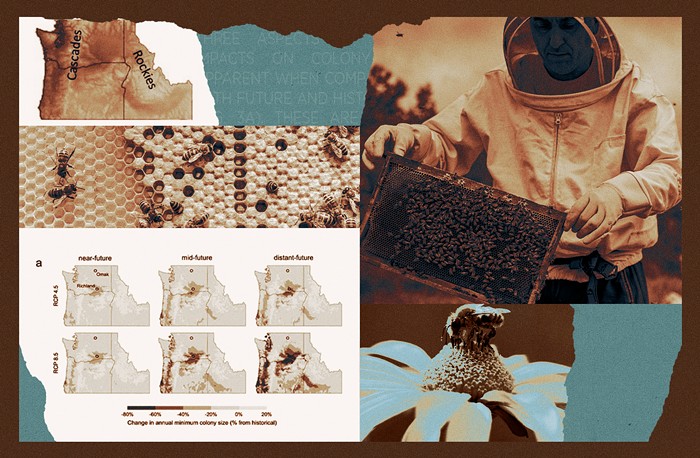
Oso Had a History of Geologic Instability: 2014’s tragic landslide in Oso, WA lead to widespread discussion of the role of logging in contributing to erosion and unstable hillsides in the Pacific Northwest. While forestry practices remain an important conversation and major factor in landslides around the region, new research from geomorphologists at the University of Washington adds nuance to the picture by revealing that Oso has been the site of as many as 25 large landslides, occuring as frequently as every 140 years. The study implicates significant deposits of clay and silt particles that developed 16,000 years ago as rivers flowing off the Cascades were dammed by the massive Cordilleran Ice Sheet (which covered Puget Sound).
Brief Notes from Evolution 2016: As mentioned last week, I was just in Austin, Texas to attend the annual Evolution Meetings, a joint conference of the three major professional societies for evolutionary biologists. As with conferences in many fields, scientific conferences fall somewhere between opposing poles of music festival and sober business meeting—depending on the size, location, and subdiscipline—but in addition to their obvious social raison d'être, they provide the single best way to get an idea of what scientists are working on months or years before publication. In other words, they’re a good place to understand what “cutting edge” research constitutes in a given year.
My own small corner of science deals with using genomic data to understand how populations and species of “non-model” organisms evolve. (“Non-model” refers to species without a long history of studies that use them to understand biology more generally—species like spotted owls, wolves, or rattlesnakes, not fruit flies or zebra fish.) The past few years, the major story has been how broadly across the tree of life new techniques to collect massive amounts of data from the genomes of non-model organisms are being applied, but also how dealing with all this data has highlighted the need for better computational resources. We’ve got more data than we know what to do with. It’s an exciting time to be a biologist.
A Few Words On Impact Factors: If you’ve spent time in academia, or with someone in academia complaining about publishing practices (a common pastime), you may have heard the term “impact factor” thrown around. What is an impact factor, and why should you care? Formally defined, it’s a metric that reflects the average number of citations of a hypothetical recent article published in the magazine will receive. More crudely, impact factors are proxies for the relative “importance” or prestige of a journal. Because a scientist’s publication record is both qualitative in addition to quantitative (the number of publications to her name), impact factors can have a significant influence on career success, and are thus a regular lynchpin for controversy.
Boosters of impact factors claim it’s important to have quasi-objective methods of assessing the reputation of a journal amidst a cluttered publishing landscape. Critics point to everything from the inappropriate application of an arithmetic mean to the fact that certain fields (e.g., the biomedical sciences) have a greater frequency of citation than others (e.g., ecology). Perhaps the most interesting critcism I’ve heard was made in a recent post on the blog Dynamic Ecology, which pointed out that while scientists could never publish results without error bars to quantify uncertainty, we credulously take impact factors as a single number, though of course like any mean have lots of noise (or variance).
Science Event of the Week: The Northwest Trek Wildlife Park in Eatonville, Washington is hosting a two-day celebration of banana slugs this Saturday, June 25th, and Sunday, June 26th. Drop by to learn what happens when you lick them.














